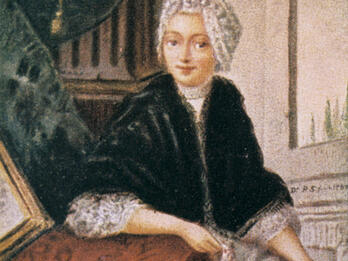Correspondence Re: Circumcision of Babies and Marranos
Aaron Lopez
Benjamin Gomez
1753–1767
New York, 28 May, 1753
Mr. Aaron Lopez
Dear Sir:
I have received your esteemed letter, in which you so kindly inform me that our Lord has given you a son. For this I extend the due felicitations to you, to your wife, my cousin, and to the rest of the family. May God permit you to rear him in great joy, together with the rest of your dear ones.
I am…
Creator Bio
Aaron Lopez
Aaron Lopez was a prominent figure in colonial-era Rhode Island. Born Duarte Lopez in Lisbon to a family of conversos, Lopez changed his given name to Aaron after immigrating to North America, where he began living openly as a Jew. He settled in Newport and built a fortune on the trade of spermaceti, a wax derived from whale oil, though he had a range of mercantile interests, including involvement in the slave trade. When Lopez was denied citizenship of the colony of Rhode Island, he relocated for a time to Massachusetts, where his application for citizenship was successful. Though his fortunes were severely damaged during the Revolutionary War, Lopez supported the war effort. He was buried in the Jewish cemetery in Newport.
Creator Bio
Benjamin Gomez
Benjamin Gomez was a member of one of the first prominent Jewish families in New York and colonial America. His father, Luis Gomez, born in Madrid to a wealthy converso, had married his mother, a Sephardic Jew from Jamaica, by prearrangement on his way to America. In New York, the Gomez family made a living trading with Native Americans. Their home, known today as the Gomez Mill House, is considered the oldest Jewish building in North America. The family also helped secure funding for the Shearith Israel Synagogue in Manhattan. Each member of the Gomez family served an important role in the observance of Jewish ritual: Benjamin was the family mohel.
Related Guide
Literature and Modernity
Jewish writing in the period spanning 1750–1880 reflects the profound changes that confronted Jews in modernity. Some writers self-consciously broke with traditional and religious models; others definitely embraced it.
Related Guide
Life Writing: Biography, Autobiography, and Ego Documents
The famous and the obscure, women and men, in epitaphs and private letters, ethical wills, cookbooks, and religious reflections, all reflect aspects of Jewish life in a period of great transition.
Language:
Places:
You may also like
Sefer yesh manḥilin (Those Who Bequeath)
Megilat sefer (The Scroll of the Book)
Epitaph from the Tombstone of Rebecca Henriquez da Costa

Letter from Fromet to Moses Mendelssohn



